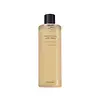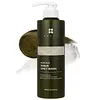What's inside
What's inside
 Key Ingredients
Key Ingredients

 Benefits
Benefits

 Concerns
Concerns

 Ingredients Side-by-side
Ingredients Side-by-side

Water
Skin ConditioningSodium Laureth Sulfate
CleansingDisodium Cocoamphodiacetate
CleansingCocamidopropyl Betaine
CleansingPropanediol
SolventP-Anisic Acid
MaskingCentella Asiatica Extract
CleansingHouttuynia Cordata Extract
Skin ConditioningScutellaria Baicalensis Root Extract
AstringentCamellia Sinensis Leaf Extract
AntimicrobialParfum
MaskingSalicylic Acid
MaskingOleth-20
CleansingCaprylyl Glycol
EmollientHydrolyzed Sclerotium Gum
HumectantCitric Acid
BufferingPolygonum Cuspidatum Root Extract
AntioxidantMelaleuca Alternifolia Leaf Oil
AntioxidantLavandula Angustifolia Oil
MaskingAsiaticoside
AntioxidantAsiatic Acid
Skin ConditioningMadecassic Acid
Skin ConditioningWater, Sodium Laureth Sulfate, Disodium Cocoamphodiacetate, Cocamidopropyl Betaine, Propanediol, P-Anisic Acid, Centella Asiatica Extract, Houttuynia Cordata Extract, Scutellaria Baicalensis Root Extract, Camellia Sinensis Leaf Extract, Parfum, Salicylic Acid, Oleth-20, Caprylyl Glycol, Hydrolyzed Sclerotium Gum, Citric Acid, Polygonum Cuspidatum Root Extract, Melaleuca Alternifolia Leaf Oil, Lavandula Angustifolia Oil, Asiaticoside, Asiatic Acid, Madecassic Acid
Water
Skin ConditioningPotassium Cocoyl Glycinate
Glycerin
HumectantMicrocrystalline Cellulose
AbsorbentSea Silt
Skin ConditioningPotassium Cocoate
EmulsifyingLauryl Hydroxysultaine
CleansingAcrylates/Beheneth-25 Methacrylate Copolymer
Sodium Chloride
MaskingPropanediol
SolventSalicylic Acid
Masking1,2-Hexanediol
Skin ConditioningCaprylyl Glycol
EmollientEthylhexylglycerin
Skin ConditioningEucalyptus Globulus Leaf Oil
PerfumingMannan
Disodium EDTA
Dipotassium Glycyrrhizate
HumectantButylene Glycol
HumectantSalix Nigra Bark Extract
Skin ProtectingBetula Platyphylla Japonica Juice
Skin ConditioningCodium Tomentosum Extract
Skin ProtectingEcklonia Cava Extract
Skin ConditioningGelidium Cartilagineum Extract
Skin ProtectingHizikia Fusiforme Extract
Skin ConditioningCitrus Unshiu Peel Extract
MaskingCamellia Japonica Flower Extract
EmollientOenothera Biennis Flower Extract
AstringentRubus Fruticosus Fruit Extract
AstringentSambucus Nigra Fruit Extract
AstringentVaccinium Macrocarpon Fruit Extract
AstringentChamaecyparis Obtusa Leaf Extract
Skin ConditioningAdansonia Digitata Seed Extract
Skin ConditioningBambusa Arundinacea Stem Extract
Skin ConditioningCeramide NP
Skin ConditioningWater, Potassium Cocoyl Glycinate, Glycerin, Microcrystalline Cellulose, Sea Silt, Potassium Cocoate, Lauryl Hydroxysultaine, Acrylates/Beheneth-25 Methacrylate Copolymer, Sodium Chloride, Propanediol, Salicylic Acid, 1,2-Hexanediol, Caprylyl Glycol, Ethylhexylglycerin, Eucalyptus Globulus Leaf Oil, Mannan, Disodium EDTA, Dipotassium Glycyrrhizate, Butylene Glycol, Salix Nigra Bark Extract, Betula Platyphylla Japonica Juice, Codium Tomentosum Extract, Ecklonia Cava Extract, Gelidium Cartilagineum Extract, Hizikia Fusiforme Extract, Citrus Unshiu Peel Extract, Camellia Japonica Flower Extract, Oenothera Biennis Flower Extract, Rubus Fruticosus Fruit Extract, Sambucus Nigra Fruit Extract, Vaccinium Macrocarpon Fruit Extract, Chamaecyparis Obtusa Leaf Extract, Adansonia Digitata Seed Extract, Bambusa Arundinacea Stem Extract, Ceramide NP
Ingredients Explained
These ingredients are found in both products.
Ingredients higher up in an ingredient list are typically present in a larger amount.
Caprylyl Glycol is a humectant and emollient, meaning it attracts and preserves moisture.
It is a common ingredient in many products, especially those designed to hydrate skin. The primary benefits are retaining moisture, skin softening, and promoting a healthy skin barrier.
Though Caprylyl Glycol is an alcohol derived from fatty acids, it is not the kind that can dry out skin.
This ingredient is also used as a preservative to extend the life of products. It has slight antimicrobial properties.
Learn more about Caprylyl GlycolPropanediol is an all-star ingredient. It softens, hydrates, and smooths the skin.
It’s often used to:
Propanediol is not likely to cause sensitivity and considered safe to use. It is derived from corn or petroleum with a clear color and no scent.
Learn more about PropanediolSalicylic Acid (also known as beta hydroxy acid or BHA) is a well-known ingredient for treating skin that struggles with acne and clogged pores. It exfoliates both the skin's surface and deep within the pores to help clear out buildup, control oil, and reduce inflammation.
Unlike AHAs (alpha hydroxy acids), salicylic acid is oil-soluble. This allows it to penetrate into pores which makes it especially effective for treating blackheads and preventing future breakouts.
Salicylic acid is also known for its soothing properties. It has a similar structure to aspirin and can calm inflamed or irritated skin, making it a good option for acne-prone skin that is also sensitive.
Concentrations of 0.5-2% are recognized by the U.S. FDA as an over-the-counter topical acne product.
It can cause irritation and/or dryness if one's skin already has a compromised moisture barrier, so it's best to focus on repairing that before introducing this ingredient into your routine.
While salicylic acid does not increase sun sensitivity, it’s still important to wear sunscreen daily to protect your skin.
If you are looking for the ingredient called BHA or Butylated Hydroxyanisole, click here.
Learn more about Salicylic AcidWater. It's the most common cosmetic ingredient of all. You'll usually see it at the top of ingredient lists, meaning that it makes up the largest part of the product.
So why is it so popular? Water most often acts as a solvent - this means that it helps dissolve other ingredients into the formulation.
You'll also recognize water as that liquid we all need to stay alive. If you see this, drink a glass of water. Stay hydrated!
Learn more about Water